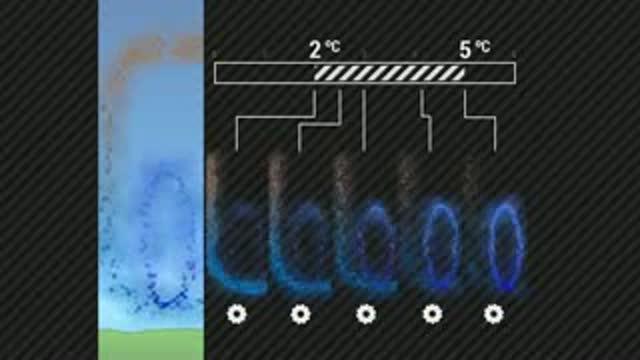A new paper in Nature estimates that global average temperatures will rise at least 4°C by 2100 and potentially more than 8°C by 2200 if carbon dioxide emissions worldwide are not reduced - due to a reestimate of the great unknowns of climate sensitivity, the role of cloud formation and whether this will have a positive or negative effect on global warming.
This new higher estimate was created using real world observations of water vapor in cloud formation.
“Our research has shown climate models indicating a low temperature response to a doubling of carbon dioxide from preindustrial times are not reproducing the correct processes that lead to cloud formation," said lead author from the University of New South Wales’ Centre of Excellence for Climate System Science Prof Steven Sherwood. “When the processes are correct in the climate models the level of climate sensitivity is far higher. Previously, estimates of the sensitivity of global temperature to a doubling of carbon dioxide ranged from 1.5°C to 5°C. This new research takes away the lower end of climate sensitivity estimates, meaning that global average temperatures will increase by 3°C to 5°C with a doubling of carbon dioxide."

A new estimate of cloud mixing that indicates our climate is highly sensitive to a doubling of carbon dioxide. His findings suggest Equilibrium Climate Sensitivity is at least 3°C. As a result, unless we curb emissions, global temperatures will rise 4°C by 2100 and more than 8°C by 2200. Credit: UNSW TV - University of New South Wales.
When updrafts rise only a few kilometers they reduce total cloud cover because they pull more vapor away from the higher cloud forming regions. However water vapor is not pulled away from cloud forming regions when only deep 15 km updrafts are present. The authors say that climate models that show a low global temperature response to carbon dioxide do not include enough of this lower-level water vapor process. Instead they simulate nearly all updrafts as rising to 15 km and forming clouds. Either way, the new model is sure to feed the lack of trust by global warming deniers, since the old numerical estimates were considered accurate also.
When there are only deeper updrafts in climate simulations, predictably more clouds form and there is an increased reflection of sunlight and so the global climate in these models becomes less sensitive in its response to atmospheric carbon dioxide.
However, the real world observations gathered for this paper show this behavior is wrong.
When the processes in climate models are corrected to match the observations in the real world, the models produce cycles that take water vapor to a wider range of heights in the atmosphere, causing fewer clouds to form as the climate warms. This increases the amount of sunlight and heat entering the atmosphere and, as a result, increases the sensitivity of our climate to carbon dioxide or any other perturbation.
The result is that when water vapor processes are correctly represented, the sensitivity of the climate to a doubling of carbon dioxide - which will occur in the next 50 years – means we can expect a temperature increase of at least 4°C by 2100.
“Climate sceptics like to criticize climate models for getting things wrong, and we are the first to admit they are not perfect, but what we are finding is that the mistakes are being made by those models which predict less warming, not those that predict more,” said Sherwood. “Rises in global average temperatures of this magnitude will have profound impacts on the world and the economies of many countries if we don’t urgently start to curb our emissions.
The developing world is not going to create less carbon dioxide and it is unethical to ask them to stop making their lives better when the developed countries can afford to switch to natural gas and nuclear power. It simply means that environmentalists have to stop migrating from alternative energy fad to alternative energy fad and embrace what works, if they care about the future. No more ethanol and wind power, focus on methane and nuclear energy and CO2 emissions, in the US at least, will drop from early 1990s levels, where they have gone back to already, all the way back to the early 1950s. What to do about increased emissions in China, India and Mexico is then a problem for the UN to handle.




Comments